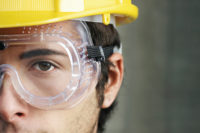Looking for ways to improve the safe performance of your people?
Follow the “KISS†principle. Here are three preventive measures covering the three basics of proactive “Performance Safetyâ€: your people, your procedures, and your overall processes.
1) Workplace examinations
This exam need only take 3-5 minutes at the start of a shift and includes looking for any hazard within the work environment itself. It’s particularly useful when employees have been away from the job for a period of time. Hazards might include loose or damaged handrails, hoses or lines across steps or walkways, blocked fire extinguishers or electrical switch boxes, fluids spilled on the floor, fire hazards like hydraulic leaks, etc.
Identifying and correcting these kinds of hazards prior to work exposures instills a proactive, conscious awareness of the work surroundings. A simple checklist can be created for employees to remind them of the type of hazards they should look for. Keep it simple. A 42-item checklist will overwhelm an employee if everything must be examined before starting work.
2) Task review/analysis
This three-minute analysis allows each team member to review the overall process and individual components of the task and become refreshed on safe procedures. It’s a great training aid for new members of the team to learn a task and know the expectations of each member working on that job.
Equipment and tools are also reviewed to ensure the correct tool and equipment are available. This eliminates using another tool improperly, feeling pressure to take a shortcut for lack of the right tool(s), or taking extra time to retrieve the correct tool.
3) Observations
Observations can be tracked and recorded for measurement purposes as long as the “KISS†principle is maintained. This might only take 1-3 minutes throughout the shift. It’s making a conscious effort for someone to observe others performing their task(s) with the intent of ensuring correct work practices. It also provides reminders when someone gets distracted or forgets a step in the procedure or a piece of personal protective equipment.This is not intended to be disciplinary in nature or to find fault with what is being done. Observations and feedback provide positive recognition for what each person is doing right, while helping each person increase his/her own safety awareness level.
Any person at any level can participate. From the CEO to the hourly employee, managers, and supervisors — everyone can participate. When it comes to safety, there should be no “food chain.†Everyone helps everyone do it right!
Final thoughts: Encourage participation in all three steps. Everyone can help each other “get better at what they do.†Performance Safety measures instill confidence, ownership, and pride within your people and help you reach that next step of success in your safety process.
